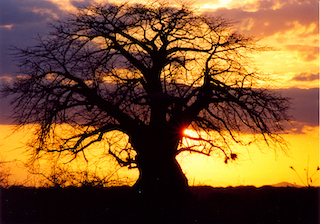Rich Kenya Wildlife – A Comprehensive Overview
Kenya, located in East Africa, is renowned for its stunning landscapes and diverse ecosystems, making it a premier destination for wildlife enthusiasts and conservationists alike. From the expansive savannahs to lush highlands, Kenya’s natural beauty is home to an array of wildlife species, each playing a crucial role in the ecological balance. This article delves into the myriad of wildlife found in Kenya, exploring their habitats, behaviours, and conservation status, while also highlighting the country’s significant role in global wildlife preservation efforts.
Kenya’s diverse ecosystems
Kenya’s geographical diversity creates a variety of habitats that support a wide range of wildlife. The country is characterized by five main ecological zones: the coastal region, the lowland savannahs, the highland plateaus, the Great Rift Valley, and the mountainous regions. Each of these zones provides unique conditions that cater to different species.
- Coastal region: The Indian Ocean coastline of Kenya is lined with mangrove forests, coral reefs, and sandy beaches. These habitats support marine life, including dolphins, sea turtles, and various species of fish. The Kisite-Mpunguti Marine National Park is a prime example of Kenya’s efforts to protect its marine biodiversity.
- Lowland savannahs: The iconic savannahs of Kenya, such as the Maasai Mara and Tsavo National Parks, are characterised by their wide-open spaces and seasonal migrations. These areas are home to large herbivores like elephants, giraffes, and zebras, as well as predators such as lions, cheetahs, and hyenas.
- Highland plateaus: The central highlands, including the Aberdare Range and Mount Kenya, offer a different set of habitats. These highland areas are covered with dense forests and are home to species like the endangered mountain bongo and various primates, including the colobus monkey.
- Great rift valley: This region is known for its unique landscapes, including alkaline and freshwater lakes. Lakes such as Lake Nakuru and Lake Naivasha attract thousands of flamingos and other bird species, while the surrounding areas host diverse wildlife.
- Mountainous regions: The western and southern parts of Kenya are mountainous and characterized by lush forests and high rainfall. These regions are crucial for the survival of several endangered species, including the African wild dog and the black rhino.
Iconic wildlife species
Kenya’s wildlife is as diverse as its landscapes. The country is home to numerous species, each with distinct characteristics and ecological roles.
- Elephant: One of Kenya’s most iconic animals, the African elephant, roams the savannahs and forests. Elephants are known for their intelligence, social behavior, and large size. Kenya’s efforts in elephant conservation, such as anti-poaching initiatives and habitat protection, are crucial for the survival of this species.
- Lion: Known as the King of the Jungle, the lion is a dominant predator in Kenya’s savannahs. Lions live in prides and play a key role in regulating the populations of herbivores. Despite their status, lions face threats from habitat loss and human-wildlife conflict, making conservation efforts essential.
- Giraffe: The giraffe, with its long neck and distinctive spotted coat, is a common sight in Kenya’s savannahs. Giraffes are browsers that feed on leaves and fruits from tall trees. The Rothschild’s giraffe, a subspecies found in Kenya, is particularly dying due to habitat loss.
- Cheetah: The cheetah, the fastest land animal. People know them for their adapted high-speed chases. Kenya’s open plains provide the ideal environment for these agile predators, who rely on their speed to catch prey. Conservation programs focus on reducing human-wildlife conflict and preserving their natural habitats.
- Rhinoceros: Kenya is home to both black and white rhinos. Their numbers are dwindling due to poaching and habitat destruction. Conservation efforts in Kenya include rhino sanctuaries and intensive anti-poaching measures to protect these magnificent creatures.
- Flamingos: The Great Rift Valley lakes, especially Lake Nakuru, are famous for their large flamingo populations. These birds have striking pink plumage and filter-feeding habits. The flamingo populations are sensitive to changes in water quality and lake levels.
Conservation efforts and challenges
Kenya’s wildlife is under constant threat from various factors, including habitat destruction, poaching, and climate change. However, the country has made significant strides in wildlife conservation.
- Anti-poaching measures: Poaching remains one of the most pressing threats to wildlife in Kenya. The government, along with various NGOs, has implemented strict anti-poaching laws and established wildlife protection units. Innovations such as drone surveillance and the use of GPS tracking devices have enhanced monitoring efforts.
- Community involvement: Engaging local communities in conservation efforts is crucial. Programs that provide economic incentives for communities to protect wildlife, such as eco-tourism and community conservancies, have proven effective. The Maasai Mara Conservancy, for instance, involves local Maasai communities in wildlife protection while providing them with economic benefits.
- Habitat preservation: Protecting and restoring natural habitats is essential for maintaining biodiversity. Kenya has established numerous national parks and reserves, including the Amboseli National Park and the Samburu National Reserve, to safeguard critical habitats. Additionally, reforestation projects aim to restore degraded areas and provide corridors for wildlife movement.
- Education and advocacy: Raising awareness about wildlife conservation is key to fostering a culture of respect and protection for wildlife. Educational programs in schools and communities help instill a sense of responsibility and highlight the importance of conservation efforts.
- Research and monitoring: Ongoing research and monitoring are vital for understanding wildlife behavior and population dynamics. Research institutions and conservation organisations in Kenya conduct studies to inform management strategies and adapt to emerging threats.
Future of Kenya’s wildlife
The future of Kenya’s wildlife depends on continued conservation efforts and adaptive management strategies. Addressing challenges such as climate change, habitat fragmentation, and human-wildlife conflict will require a collaborative approach involving government agencies, conservation organisations, and local communities.
- Climate change adaptation: Climate change poses a significant threat to wildlife through altered weather patterns and habitat changes. Adaptation strategies, such as creating wildlife corridors and ensuring water sources remain accessible, are essential for mitigating the impacts of climate change.
- Sustainable tourism: Eco-tourism plays a crucial role in supporting conservation efforts while providing economic benefits to local communities. Promoting responsible tourism practices helps minimise negative impacts on wildlife and habitats.
- Strengthening legal frameworks: Enhancing legal frameworks and enforcement mechanisms to combat wildlife crime is vital. International cooperation and stringent penalties for poaching and illegal trade contribute to protecting Kenya’s wildlife.
- Supporting conservation innovations: Embracing technological innovations, such as satellite tracking and artificial intelligence, can enhance wildlife monitoring and conservation efforts. Innovations that improve anti-poaching strategies and habitat management will play a significant role in safeguarding Kenya’s wildlife.
Diverse wildlife
Kenya’s wildlife is a testament to the country’s rich natural heritage and its commitment to conservation. The diverse ecosystems and iconic species found in Kenya highlight the importance of preserving these treasures for future generations. Through concerted efforts in anti-poaching, habitat preservation, community help, and education, Kenya continues to lead the way in animal protection. As challenges evolve, the ongoing efforts to protecting Kenya’s animals will ensure that its natural wonders remain a source of awe and wonder for years to come.





